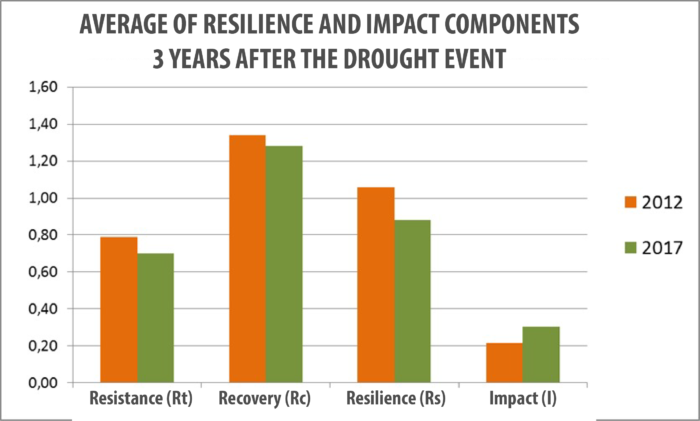
The study of my Bachelor’s Thesis Work in Forestry and Environmental Sciences examined a mixed coniferous reforestation forest about forty years old, mainly consisting of white spruce (Abies alba Miller) and maritime pine (Pinus pinaster Aiton), located in Basilicata, in the municipality of Savoia di Lucania (PZ, Italy), in the locality of “Grotta dell’Angelo.” It was decided to focus on white spruce because it was found to be the species most present in the study area and because it was assumed that it might have been most affected by drought periods and water stress, being an artificial stand and being at the limits of its distribution range. Moreover, white spruce, being a distinctly mesophilic species, demanding moisture during the growing season and summer months, may have been significantly affected by reduced rainfall and summer drought.
The objective was to assess stand responses to drought through the analysis of radial growth performance (i.e., through the study of annual growth ring amplitudes), compared with climate data (covering a nine-year period from 2012 to 2021), and the estimation of resilience, broadly defined as the ability of an ecosystem, community, or individual to recover after a disturbance and regain the structure and function prior to the disturbance (Scheffer et al, 2001; Folke et al., 2004).
Through the calculation of the average annual basal area increment (BAI), expressed in cm²/year, it was possible to observe the growth of the plants from year to year, which actually showed less growth during 2012 and 2017 (the hottest and driest years of the observation period), confirming that they were affected by the warmer and drier climatic conditions during these periods. Subsequently, through the calculation of the resilience components (resistance, recovery and resilience per se) (Lloret et al., 2011), it was possible to assess the response of the plants to the drought events of 2012 and 2017 and, therefore, the impact these had on the stand under study, taking as a reference a period before and after the drought event lasting 3 years.
Several indices (Lloret et al., 2011) were applied to assess the components of resilience (Rt = resilience, Rc = recovery, and Rs = resilience per se) and the impact (I) inflicted by disturbance by analyzing the growth performance of trees before and after periods of low growth.

The results obtained showed an effective reduction in white spruce growth during the hot and drought years 2012 and 2017, which represent two close events of rather short duration but with high water stress intensity, especially in the summer period. However, as shown in the graph, the stand unexpectedly showed fair resilience to both events and good recovery, especially compared to the 2012 drought (Rc = 1.34), restoring pre-drought growth performance. This could be due to the young age of the trees and mixing with another species, in this case maritime pine (Pinus pinaster Aiton).
It was also possible to hypothesize that the firs in the stand under study, being at the limits of their range, may have enacted xerophytic adaptations, typical of southern populations, as was also found in a dendroecological survey conducted on the white spruce of Serra San Bruno (CZ) (Santini A., Martinelli N., 1991). The impact of drought episodes on the stand was greater in 2017 (I = 0.30) than in 2012 (I = 0.21), as can be seen from the graph. The all-too-low impacts correspond to fairly high resilience (Rt = 0.79 in 2012 and Rt = 0.70 in 2017).
Rs ≥ 1 = high resilience
Rc > 1 = full recovery
Rt = 1 = full resilience
Overall, the study showed how the impacts of a previous drought event (2012) and past cumulative effects, affected stand response to subsequent disturbance events (2017), in this case resulting in reduced resistance, recovery and resilience. The stands, in fact, may have been affected by two such close drought events and any other drought and water stress episodes that occurred between the two main events. In general, the conifer’s need for humid and not excessively hot summers emerged.
While it is true that Mediterranean forests seem to be better adapted to seasonal drought periods and/or irregular rainfall regimes (Gazol et al., 2018a), it is also true, however, that in the future the intensification of such phenomena could irreversibly impact forest ecosystems (Gazol et al., 2018b). Indeed, in light of future scenarios, there is an increasing need and urgency to improve our understanding of the processes underlying drought resistance and resilience in tree species for more effective and sustainable forest management and monitoring.
Admittedly, this work is based on a short observation period that did not allow for an assessment of the impact and long-term effects of several consecutive drought years. Therefore, further long-term studies and investigations will be needed in the future to get more feedback and to improve current knowledge.



































